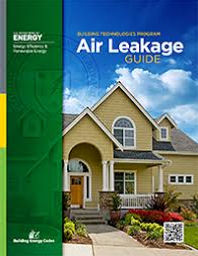.png)
Energy By Design
Fast and Efficient From Permitting to Close!
Florida Energy Code (FAQ)
What is the Florida Energy Code?
The Florida Energy Code was implemented July 1st, 2017 to set high standards in many areas of home construction. There are standards for insulation, windows and doors, limits on air leakage rates, standards for water heater and HVAC efficiency rates and fireplaces. Balancing all of these systems together takes an understanding of the principles of building science. Designing a home where all of these systems work together in the most efficient and compatible manner is the aim of the Florida Energy Code.
Under the Florida Energy Code homes must be built to be efficient with a well performing building envelope that prevents high air leakage rates. The air leakage rates must be tested and confirmed to fall below the standards set by the code
What is the Maximum Air Leakage Allowed by the Florida Energy Code?
Air leakage is measured with a blower door. The maximum air leakage allowed by the Florida Energy Code is laid out in the Florida Building Code - Energy Conservation, Sixth Edition (2017)
The building or dwelling unit shall be tested and verified as having an air leakage rate not exceeding seven air changes per hour in Climate Zones 1 and 2, and three air changes per hour in Climate Zones 3 through 8. Testing shall be conducted in accordance with ANSI/RESNET/ICC 380 and reported at a pressure of 0.2 inch w.g. (50 pascals). Testing shall be conducted by either individuals as defined in Section 553.993(5) or (7), Florida Statutes, or individuals licensed as set forth in Section 489.105(3)(f), (g) or (i) or an approved third party. A written report of the results of the test shall be signed by the party conducting the test and provided to the code official. Testing shall be performed at any time after creation of all penetrations of the building thermal envelope.
Chapter 4 speaks specifically to residential energy efficiency.
How Are the Air Leakage Rates Tested?
When the home construction is complete and all air sealing has been completed, a Blower Door Test will be performed to verify that the home's air leakage rates fall below the standard set by the Florida Energy Code.
What is a Blower Door and How Does it Work?
The Blower Door consist of a frame and flexible panel that fit in a doorway, a variable-speed fan, a pressure gauge to measure the pressure differences inside and outside the home, and an airflow manometer and hoses for measuring airflow.
The fan within Blower Door simulates a 20 mile per hour wind blowing against the home in all directions. The wind depressurizes the home and creates a pressure equivalent to 50 Pascals. The 50(pa) pressure difference causes air inside the home to exchange with the outside air allowing the transfer rates or air leakage rates to be measured with the airflow manometer.
Why Where These Changes Implemented?
Energy efficient homes cost less to operate and are more comfortable to live in than comparable homes. Builders who meet or exceed the Florida Energy Code requirements are doing a great service not only for their clients but for the future of our state. Home buyers benefit from the builder's diligence and the homes they build will have greater value for years to come. Owners of these efficient homes have the benefit of a well constructed, efficient and healthy home and future buyers will be more apt to pay a premium to obtain one of these well constructed and efficient homes.
What Can I Do To Make Sure I'm Building To Meet The Standards in the Florida Energy Code?
Achieving and Evaluating Residential Compliance of Tight Envelopes Presentation:
What Other Resources are Available To Help Meet the Florida Energy Code?
The U.S. Department of Energy has published The Air Leakage Guide to help you implement building techniques which will reduce air leakage rates and increase energy efficiency. By following these guidelines, when it comes time to perform the required air leakage testing, which measures the air changes per hour, your building should fall below these required levels.
How Can I Prove That My Building Meets The Florida Energy Code?
Evidence of meeting these requirements must be demonstrated and a visual inspection alone does not provide the information needed. Measuring building thermal envelope and duct leakages are the most definitive ways to answer the question of meeting the building performance levels required by the Florida Energy Code. But how are the leakage rates measured? By performing blower door testing and HVAC duct leakage testing, questions as to the number of air changes per hour and leakage rates can be definitively answered.
Who can provide these tests and the certification required under the Florida Energy Code?
At Energy By Design, you'e working with a BPI Certified Building Analyst qualified to provide the Blower Door Testing required to meet the Florida Energy Code. You also have the benefit of working with a RESNET certified energy rater to provide blower door and HVAC duct leakage testing for your new home, renovated home or home addition.
The purpose of Energy By Design is to provide evidence that your building meets the standards set forth in the Florida Energy Code. The goal of the Florida Energy Code is to guide builders in creating an energy efficient building with health, safety and air quality in mind. Call today: 407-450-0295
.png)

